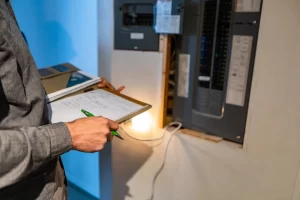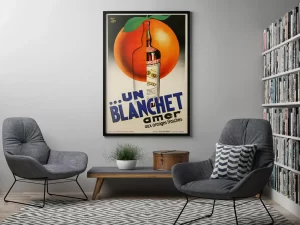In the pursuit of enhancing accessibility and inclusivity in the art world, this article explores the concept of inspiring creativity in mobility equipment through the use of DIY adaptive tools for artists.
By addressing the challenges faced by artists with mobility equipment, we delve into innovative adaptations for their tools and equipment, such as modified brushes and adjustable easels.
Through these creative solutions, artists are empowered to overcome obstacles, fostering a sense of belonging and promoting inclusivity in the studio.
Key Takeaways
- Art studios should be accessible to everyone, regardless of physical abilities
- Providing adaptive art equipment makes a significant difference in independent art creation
- Artists with mobility challenges can engage in any artistic medium with ease and confidence through adaptive equipment
- Success stories and testimonials inspire others to pursue their artistic dreams despite physical limitations
The Importance of Accessibility in Art Studios
The importance of accessibility in art studios cannot be overstated. Art is a powerful form of expression that should be accessible to everyone, regardless of their physical abilities. By creating an inclusive and accessible environment, art studios can empower individuals with disabilities to explore their creativity and participate fully in the artistic process.
Accessibility in art studios goes beyond just physical accommodations. It also includes providing resources and tools that cater to diverse needs. For example, offering adaptive art equipment such as easels and brushes designed for individuals with limited mobility can make a significant difference in their ability to create art independently.
Moreover, accessibility is not just about physical barriers. It is about fostering a sense of belonging and ensuring that everyone feels welcomed and valued in the art studio community. By creating an environment that embraces diversity and accommodates individual needs, art studios can inspire creativity and empower artists with disabilities to reach their full potential.
Understanding the Challenges Faced by Artists With Mobility Equipment
Artists with mobility equipment often face unique challenges in their creative process. The physical limitations imposed by their mobility equipment can hinder their ability to fully engage with their art.
These challenges can range from limited mobility and dexterity to difficulties in accessing art supplies and equipment. For example, artists who use wheelchairs may find it challenging to navigate their studio space or reach materials that are stored at height. Additionally, artists with limited hand mobility may struggle to manipulate brushes or other tools with precision.
These challenges can have a significant impact on an artist’s ability to express themselves and pursue their artistic vision. However, it is important to recognize that these challenges do not define an artist’s potential. With the right support and adaptive tools, artists with mobility equipment can overcome these barriers and unleash their creativity.

Innovative DIY Adaptations for Artists’ Mobility Tools
Continuing from the previous subtopic, artists with mobility equipment can explore innovative DIY adaptations to enhance the accessibility of their mobility tools. These adaptations can provide artists with the freedom and flexibility to create art in their own unique way.
One such adaptation is the use of modified paintbrushes with extended handles, allowing artists with limited reach or dexterity to easily grasp and control the brush.
Another example is the creation of adjustable easels or workstations that can be customized to accommodate different seating positions or wheelchair heights.
Additionally, artists can utilize adaptive grips or attachments for their tools, such as pencil holders or brush grips, to improve their ability to hold and manipulate art supplies.
Enhancing Creativity Through Adaptive Equipment
Enhancing artistic expression through adaptive equipment is a key aspect of promoting accessibility and inclusivity in the studio. By providing artists with the tools they need to overcome physical limitations, we can empower them to fully explore their creativity and showcase their unique perspectives.
Adaptive equipment, such as modified brushes, easels, or specialized grips, can make a significant difference in an artist’s ability to create. These tools are designed to accommodate a wide range of needs, allowing artists with mobility challenges to paint, draw, sculpt, or engage in any artistic medium with ease and confidence.
Inspiring Artists: Success Stories and Testimonials
Through the use of DIY adaptive tools, artists with mobility challenges have been able to enhance their artistic abilities and achieve success in the studio. These inspiring artists have shown incredible resilience and determination in pursuing their passion for art, despite facing physical limitations. Their success stories and testimonials serve as a powerful reminder of the human spirit’s ability to overcome obstacles and achieve greatness.
One such artist is Sarah, who was diagnosed with a spinal cord injury that left her paralyzed from the waist down. With the help of adaptive tools, Sarah has been able to continue her love for painting. She has developed her own customized easel that can be adjusted to the perfect height and angle for her to work comfortably. This has allowed her to create stunning paintings that capture the beauty of the world around her.
Another artist, Michael, has a condition that affects his fine motor skills. This made it challenging for him to hold a paintbrush and create intricate details. However, with the use of adaptive tools such as modified paintbrush handles and finger splints, Michael has been able to regain control and precision in his artwork. His paintings now showcase his unique style and artistic vision.
These success stories not only highlight the importance of adaptive tools in the creative process but also inspire other artists with mobility challenges to pursue their artistic dreams. They serve as a reminder that with determination, creativity knows no bounds. By sharing their testimonials and experiences, these artists empower others to believe in their own abilities and strive for greatness in the studio.
Promoting Inclusivity in the Art Community: Resources and Support
To promote inclusivity in the art community, it is essential to provide artists with mobility challenges access to a wide range of resources and support. Creating an inclusive environment means ensuring that artists of all abilities have equal opportunities to express themselves and share their art.
This can be achieved by offering accessible studio spaces, adaptive tools and equipment, and specialized training programs. Additionally, providing financial support and grants specifically designed for artists with mobility challenges can help remove barriers to participation.
Collaborating with disability organizations and advocacy groups can also help raise awareness and create a more inclusive art community. By actively working towards inclusivity and providing the necessary resources and support, we can foster a sense of belonging and empower artists with mobility challenges to fully engage in their artistic pursuits.
Frequently Asked Questions
How Can Artists With Mobility Equipment Enhance Accessibility in Their Studios?
Artists with mobility equipment can enhance accessibility in their studios by utilizing DIY adaptive tools. These tools can be custom-made to meet their specific needs, allowing them to engage in their artistic practice with greater ease and comfort.
By incorporating modifications such as adjustable easels, specialized grips for brushes, and accessible storage solutions, artists can create a space that is conducive to their unique abilities.
This fosters inclusivity and empowers artists with mobility equipment to fully express their creativity in the studio.
What Are Some Innovative DIY Adaptations for Artists’ Mobility Tools?
Some innovative DIY adaptations for artists’ mobility tools include:
- Customizing wheelchair armrests to hold art supplies.
- Creating adjustable easels that can be used while seated.
- Developing modified paintbrush handles for better grip.
These adaptations not only enhance accessibility in the studio but also inspire creativity by allowing artists with mobility equipment to fully engage in their artistic practice.
How Can Adaptive Equipment Enhance Creativity for Artists With Mobility Challenges?
Adaptive equipment plays a crucial role in enhancing creativity for artists with mobility challenges. By providing accessibility in the studio, these tools empower artists to fully engage in their artistic process.
Whether it’s modifying existing equipment or creating DIY adaptations, artists can customize their tools to suit their unique needs. This not only increases their independence but also inspires creativity by enabling them to explore new techniques and mediums.
Adaptive equipment fosters inclusivity in the art community, ensuring that artists with mobility challenges can fully express their artistic vision.
Can You Share Any Success Stories or Testimonials From Artists Who Have Used Adaptive Tools?
We have received numerous success stories and testimonials from artists who have utilized adaptive tools in their creative process. These individuals have expressed how these tools have greatly enhanced their accessibility in the studio, allowing them to fully express their artistic vision despite mobility challenges.
Many have shared how these tools have not only improved their physical comfort and ease of use, but also inspired them to push the boundaries of their creativity.
The positive impact of these adaptive tools on their artistic journey is truly remarkable.
What Resources and Support Are Available to Promote Inclusivity in the Art Community for Artists With Mobility Equipment?
Promoting inclusivity in the art community for artists with mobility equipment requires a range of resources and support.
Organizations such as disability arts networks and disability-led arts organizations provide platforms for artists to showcase their work and connect with other artists.
Accessible art studios and galleries equipped with adaptive tools and technologies ensure that artists with mobility equipment can fully participate in the creative process.
Additionally, funding opportunities, grants, and mentorship programs specifically tailored to artists with disabilities help to empower and support their artistic endeavors.
Conclusion
In conclusion, enhancing accessibility in art studios is crucial for inspiring creativity among artists with mobility equipment. By understanding the challenges they face and providing innovative DIY adaptive tools, we can empower artists to overcome physical limitations and create impactful art.
These tools, such as modified brushes and adjustable easels, unlock new possibilities and promote inclusivity in the art community. By promoting resources and support, we can ensure that all artists have the opportunity to embrace their creativity and thrive in their artistic journey.
You may also like to read:
Innovation Meets Creativity: Exploring the Arts in Industrial Fabrication

